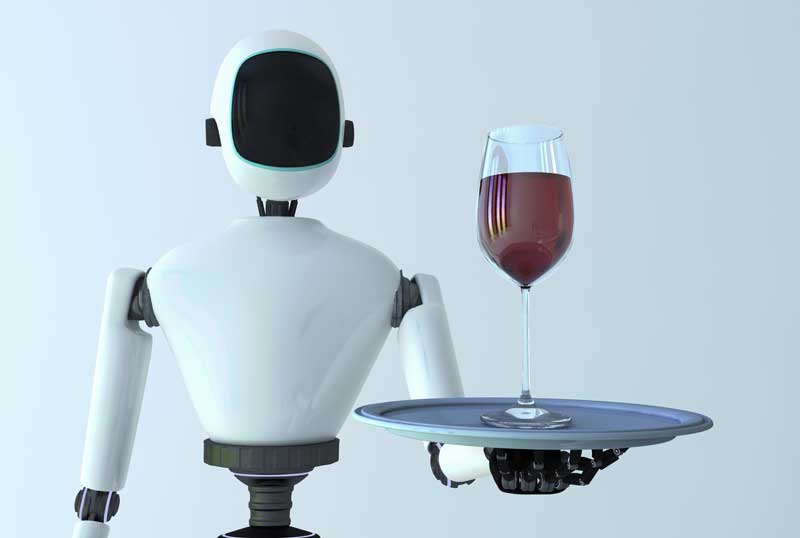“The wine industry doesn’t like change. The wine industry doesn’t like innovation. The wine industry thinks that things should be the way it was, or the way they were.” For Robert Joseph, wine writer and connoisseur, this idea holds true. At this year’s World Bulk Wine Exhibition, an international event where wine industry professionals come together to celebrate a good bottle, Joseph challenged the attitudes that many hold towards the unorthodox approaches of doing business.
Tweet: The future of wine has changed … but in what direction?
Like many others, Joseph questions what it takes to sell a bottle of wine heading into 2019. In a landscape with ripe opportunities for innovation, it is becoming more apparent that risks need to be taken. So what is the future of wine beginning to look like?
Use your voice
Marketing budgets are important. If you’re not representing yourself in a noisy market, then you will disappear. Many don’t recognize the importance of investing in a marketing budget as they are still blinded by the belief of “If we make nice wine, people will buy it.” Marketing doesn’t have to be grandiose, it just needs to share a story that hasn’t been told yet.
Joseph stresses that in these days, having a great product just isn’t enough to sell a bottle. Organizations have to fight for their spot on the shelf in whichever means possible. Investing even as little as 7% of your budget towards a marketing plan is what will keep you there.
Consistency through adaptability
Environmental factors are changing the way we lead our everyday lives. The world is moving at its own pace, and if we don’t move with it, we’ll be left behind. But what happens when you can’t adapt to your surrounding environment? For vineyards, adaptability might mean relocation. With drying vines in their native lands, they have to re-think their production process to adapt to the changing climate. As of late, wines are beginning to be made in England, Denmark, and Holland – your not-so-typical wine countries. Wine experts know that the location of the vineyard affects the taste. But is this something that the everyday wine amateur will notice?
According to Joseph, “The market doesn’t necessarily care where it came from.” Consumers only care about buying the product that they’ve had before. “We want the thing that we had last time. And that is the way people buy beer, it’s the way people buy spirits, and whether we like it or not, it’s the way people are now buying wine.” If this idea holds true, how can organizations provide the sameness that consumers want while reinventing the product’s appeal?
Think outside the box
Joseph and many others understand that in order to survive, you have to get creative. The benefits of thinking outside of the box and doing something a little different outweigh being complacent with the ordinary. After seeing others succeed with their creative efforts, he would like to see many more make bold moves. But where should one start?
Wine tourism and entertainment are foreign to the wine connoisseur. But regardless, it is what sells the product, as Joseph states “It’s not what we think of as the wine business. It’s what we think of as entertainment.” When consumers are looking at a shelf, you have to give them a reason to pick your bottle. What can you do to stand out among others that look just like you and essentially sell the same thing?
Augmented reality bottle labels are one way to impress. An example that Joseph references is a wine bottle that uses zombies from the television series, “The Walking Dead.” With the help of augmented reality technology, the zombies on the bottle come to life, putting the consumer right in the apocalypse, grabbing their attention.
So now that they’ve figured out how to sell one bottle, what can they do to sell another? The creative minds behind this project created an experience for consumers when they purchase two bottles. With the two bottles placed together, the augmented reality technology displays the zombies from each bottle meeting at the middle and interacting with each other, creating a more entertaining experience for the consumer. As out-there as the idea may appear to some, we must place the consumer’s time and attention as the priority. What can we pitch to them in the shortest amount of time so that they stay with us?
Read more
Stay tuned for Joseph’s new book, “The Future of Wine Has Changed,” which will be released in early 2019. It may also be a future Dimensional Insight Book Club selection!
What does the wine industry look like now? Find out here:
- How Wine Producers Are Solving Production Challenges with Technology
- How Analytics Can Help Wineries Improve the Tasting Room Experience
- Understanding Wineries’ Top 3 IT Priorities
- DIUC19 Day 4: Final Training and Farewell - August 8, 2019
- DIUC19 Day Three: Sessions and Product Showcase - August 7, 2019
- 4 Ways to Sabotage a Data Analytics Project - July 25, 2019



